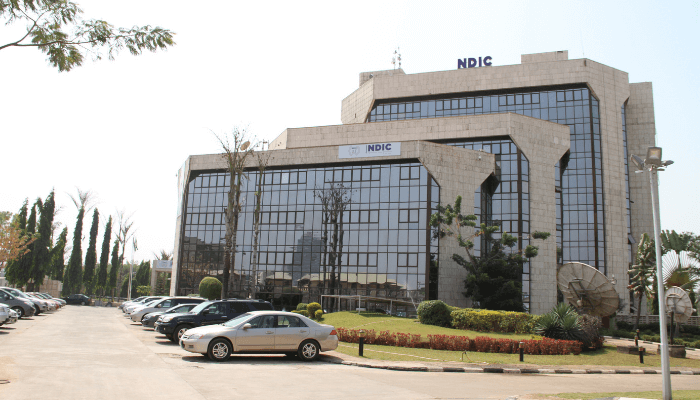
The evolving complexity of the banking sector and its crucial role in economic intermediation underscore the need for a robust mechanism to manage risks. As deposit-taking institutions expand their scope and deepen their risk exposures, a proactive deposit insurance framework becomes non-negotiable.
For Nigeria, the Nigeria Deposit Insurance Corporation (NDIC) plays a pivotal role in mitigating risks and ensuring financial system stability. It is within this context that the imperative for a Risk-Minimizer Deposit Insurance System (RM-DIS) emerges, not just as a regulatory formality but as a strategic necessity.
At its core, an RM-DIS aims to protect depositors, especially small-scale savers, who often bear the brunt of financial crises. A credible deposit guarantee system shields them from the devastating consequences of bank failures and prevents the kind of panic withdrawals that could destabilise the banking sector. More importantly, it reinforces public confidence in the formal financial system, which is critical for financial inclusion and sustainable economic growth.
The RM-DIS also serves as a firewall against systemic risk. When one bank collapses, it can trigger a domino effect that imperils others, particularly in an interconnected financial ecosystem. By ensuring that failing institutions do not threaten the entire system, the NDIC’s insurance mechanisms function as a critical stabiliser. The agency’s ability to intervene early and decisively is bolstered by a well-funded insurance pool and risk-sensitive assessment of insured institutions. However, protecting depositors should not encourage risky behaviour by banks. The NDIC must strike a delicate balance between offering security and discouraging moral hazard. Risk-based premium assessments are vital in this regard. By requiring institutions with higher risk profiles to contribute more to the insurance fund, the system creates a built-in incentive for prudent risk management, ensuring that no bank can recklessly endanger depositors’ funds under the assumption of a guaranteed bailout. Premium payments by insured institutions are not just about cost recovery, they are about fairness and accountability. Financial institutions benefit from the stability and depositor trust fostered by the NDIC’s guarantees. It is only equitable that they contribute to the system that protects them and their customers. This reduces dependence on public funds and ensures that the financial system is self-sustaining, insulating taxpayers from the fallout of poor banking practices. Beyond deposit insurance, the NDIC’s deferential premium assessment system offers a blueprint for smarter regulation. This approach differentiates institutions based on their size, complexity, and risk profile. Larger or more interconnected institutions face stricter regulatory requirements, while smaller, less risky ones enjoy less onerous supervision. It is a model that promotes fairness and allows the NDIC to concentrate its limited resources where they are most needed. Such tailored supervision improves the overall efficiency of the regulatory system. Instead of deploying a one-size-fits-all method, the NDIC can adapt its interventions based on a bank’s real-time risk exposure. This not only saves regulatory resources but also incentivizes banks to improve their risk profiles to benefit from lower premiums and lighter regulatory burdens.
Importantly, the deferential system discourages moral hazards by linking regulatory scrutiny and financial contributions to actual behaviour and risk levels. It ensures that institutions bear the consequences of their actions, reducing the temptation to engage in excessive risk-taking simply because of the safety net provided by the deposit insurance system.
Complementing this approach is the NDIC’s risk-based supervision (RBS) model, supported by off-site surveillance. Off-site monitoring offers real-time insights into an institution’s financial health without the logistical burden of constant on-site inspections. Through periodic reports, stress testing, and data analysis, the NDIC can detect signs of trouble before they escalate, enabling timely corrective action. Off-site surveillance is also a more cost-effective tool, especially in a country like Nigeria where the scale and diversity of financial institutions vary widely. It ensures that regulatory attention is proportionally distributed, with higher-risk institutions facing more frequent and in-depth assessments, while low-risk players are spared excessive compliance costs.
The benefit of this continuous surveillance is early detection. The NDIC’s capacity to act on financial irregularities or capital inadequacies before they spiral into crises is critical. This proactive oversight promotes institutional discipline, enhances transparency, and contributes to a more resilient banking environment.
Ultimately, a well-structured RM-DIS, underpinned by a deferential assessment process and robust off-site monitoring, strengthens the banking system and safeguards depositor interests. It ensures that financial institutions are not only supervised but are held accountable in a manner that aligns with their risk footprint. This, in turn, fosters a culture of responsibility and sustainability.
As Nigeria navigates a volatile global economic climate and seeks to deepen its financial inclusion drive, the role of the NDIC becomes even more crucial. A risk-sensitive, data-driven, and equitable insurance system will not only minimise the fallout of bank failures but also encourage trust, innovation, and long-term growth in the financial sector. The case for a proactive and risk-minimising deposit insurance framework has never been stronger.